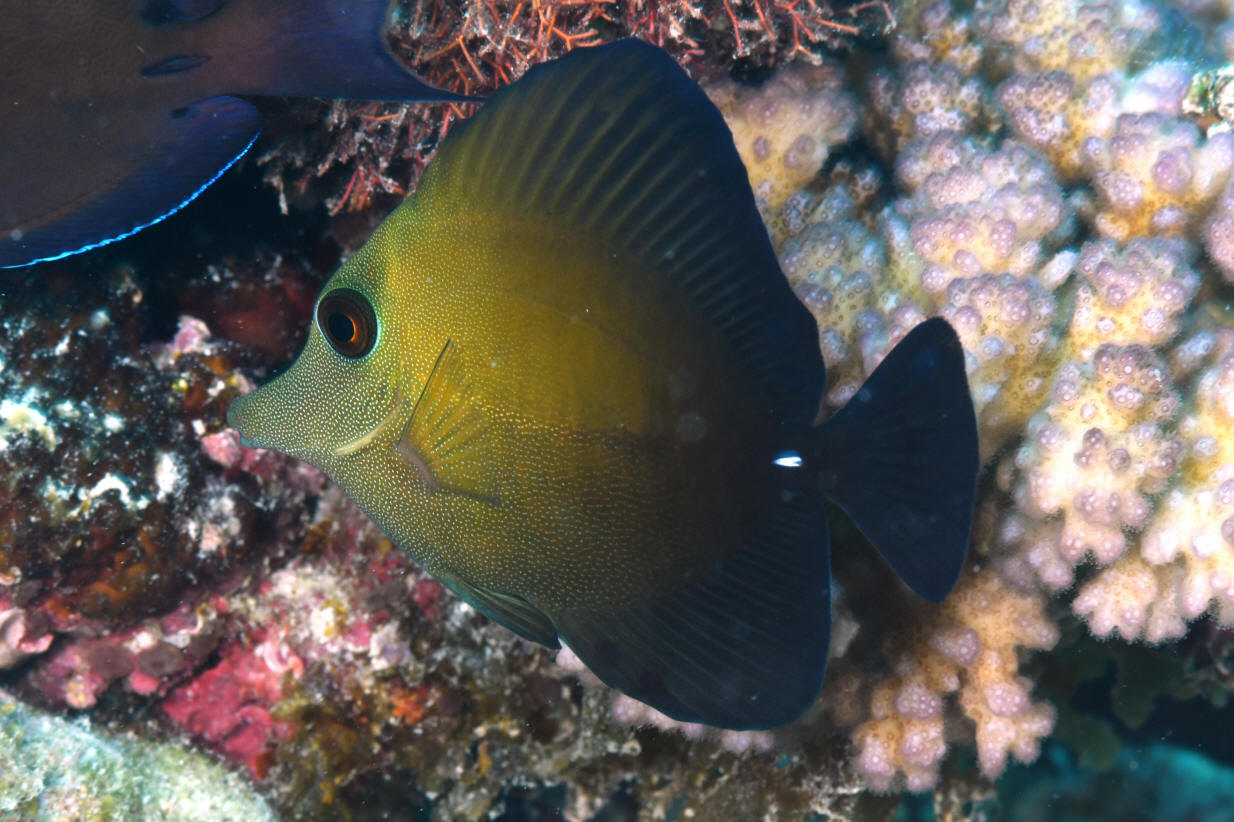Archive 947: Daily Pix FULL SIZE
(For personal use only: NOT public domain)
Mmm, right click,
add, set as background...
To: Today's:
Desktop size download, Today's FAQs,
SW Archive 920, SW Archive 921,
SW Archive 922, SW Archive 923,
SW Archive
924, SW Archive 925,
SW Archive 926, SW Archive 927,
SW Archive
928, SW Archive
929, SW Archive 930,
SW Archive 931, SW Archive 932,
SW Archive 933, SW Archive
934, SW
Archive 935, SW Archive 936,
SW Archive 937, SW Archive 938,
SW Archive 939,
SW Archive 940, SW Archive
941, SW Archive 942,
SW Archive 943,
SW Archive 944, SW Archive
945, SW Archive 946,
SW Archive 948, SW Archive
949, SW Archive 950,
Freshwater Pic
of the Day Link
,
|
|
|
|
Ctenochaetus truncatus the Indian Ocean Spotted or Goldring
Bristletooth (replaced by C. strigosus in the Pac.). Overall yellow-brown to
darker; with distinct pale spots, brighter anteriorly. Live just above reef
in small groups/associations, mainly in Acropora fields that they dart into
for safety. 5-30 m. To seven inches, 18 cm. Juveniles are bright yellow.
Mauritius pic 2016. |
|
.JPG)
|
|
Ctenochaetus striatus
(Quoy & Gaimard 1828) the Striped Bristletooth, is the one
member of the genus found extending into the Red Sea (but also
found in the Indo-Pacific to Oceania and the I.O.); it is the most
frequently imported species in Europe. It's body color is
overall drab olive sporting wavy blue lines (see them in the dorsal fin?).
Small orange dots are sprinkled on the head. Mauritius pic 2016.
|
.JPG) |
|
Paracanthurus hepatus (Linnaeus 1766), the
(Pacific) Yellow-Tailed Blue, Palette, Regal, or Hepatus Tang.
Indo-Pacific; East Africa to the Line Islands. Found in loose
aggregations near Pocillopora corals in which they dive into to
hide. To a foot long in the wild, rarely more than half that in
captivity. A zooplankton feeder principally, feeding on microalgae
secondarily. Mauritius pic 2016.
|
 |
|
Zebrasoma scopas (Cuvier 1829), the Brown
or better, Two-Tone Sailfin Tang. The former common name can be a
bit of a misnomer; I have seen scopas specimens as
brightly yellow as a flavescens and as dark as a
rostratum. As young they're different still, with
light colored fronts grading to dark variable spots and lines.
Occasional "dirty" or mixed-color crosses between the
brown and Z. flavescens are encountered along their contiguous
distributions. Widely ranging in the Indo-Pacific. Mauritius pic 2016.
|
|
|

